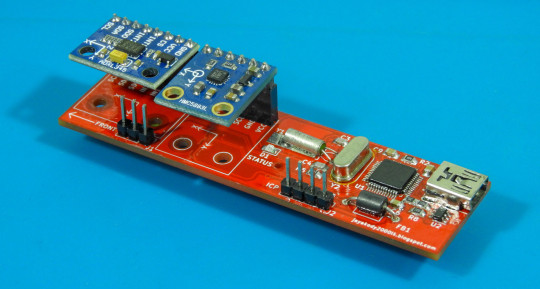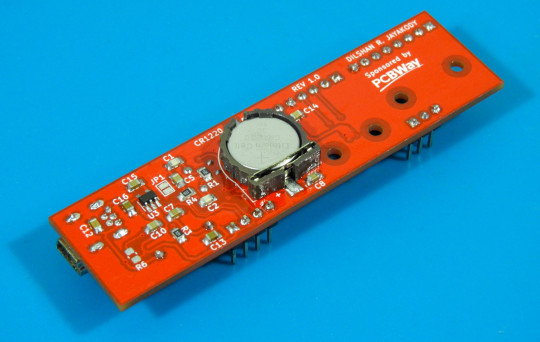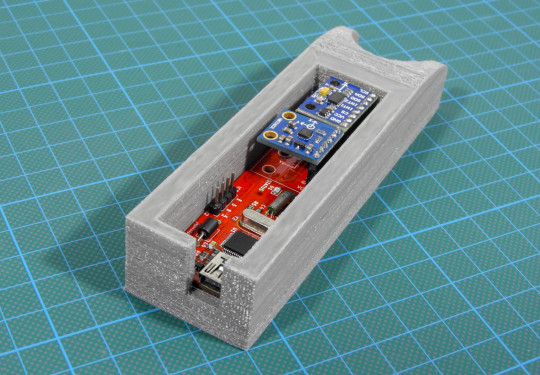#USBLC6-2SC6
Explore tagged Tumblr posts
Text
https://www.futureelectronics.com/p/electromechanical--circuit-protection--esd-protection/usblc6-2sc6-stmicroelectronics-7967441
Bi-Directional ESD Protection, Circuit Protection, CAN Bus ESD Protection Diode
USBLC6 Series 2 Line 6 V Uni / Bi-Directional ESD Protection - SOT-23-6
#STMicroelectronics#USBLC6-2SC6#ESD Protection & Diode Arrays#Bi-Directional#Circuit Protection#CAN Bus#Diode circuit#what is ESD#ESD protection equipment#High-voltage ESD#Electro Magnetic Compatibility#ESD suppressor diode
2 notes
·
View notes
Text
Open source 24-channel USB high-voltage driver
When it comes to automation and control systems, there's often a need for multiple digitally controlled output terminals with high-voltage handling capabilities. Many existing modules are bulky, expensive, or require numerous additional components to function. To address this gap, I've developed a fully open-source, USB-controlled 24-channel high-voltage driver. This device provides precise, flexible control in a compact and user-friendly package. The project is open hardware, released under the CERN-OHL-W license, ensuring transparency from hardware schematics to firmware code. The driver module communicates via USB using a simple virtual COM port, eliminating the need for special drivers and complex setups.

At the core of the system are three TPIC6B595 shift registers, each supplying eight open-drain outputs that can handle up to 50V and sink currents of up to 150mA per channel. These registers are daisy-chained to achieve a total of 24 outputs. The outputs are designed for low-side switching and include integrated clamping diodes, making them suitable for driving inductive loads such as relays and solenoids. Data is clocked into the registers through serial input from a microcontroller, allowing for fast and reliable state updates across all channels with just a few lines of code.
The logic and communication for this module are managed by the STC15W204S microcontroller, a cost-effective yet powerful 8051-based MCU with enhanced UART performance and an integrated oscillator. This chip is paired with a CH340N USB-to-UART bridge, which presents the device as a standard virtual COM port to the host PC. Upon connection, the microcontroller listens for a set of AT-style commands sent over the serial connection. These commands are straightforward and user-friendly, for example, "ON=65280" activates the middle 8 outputs, "CLR" turns off all channels, and "VER" retrieves the firmware version. Additionally, there is a command to save the current output state to the built-in EEPROM, enabling the system to restore its output to a known state after power cycles. This interface design is perfect for scripting, automation, or integration with software tools such as Python, LabVIEW, or custom control GUIs.
The PCB is designed using KiCad and features a 2-layer layout measuring 75.25mm × 33.75mm. It includes 2.54mm pitch headers for output connections and is equipped with a USB Type-C connector. Power can be supplied through either USB or an external regulated 5V source, which can be selected via onboard jumper settings. The layout ensures clean signal routing and minimizes crosstalk or interference, even when switching high-voltage loads. Careful decoupling and protection components provide robustness for real-world applications.

The PCB for this module was fabricated by PCBWay, who generously sponsored this project. PCBWay offers high-quality PCB manufacturing and assembling services. Also, they offer CNC and 3D printing services. The PCB of this module is available to order from PCBWay. Check out the PCBWay website for its manufacturing capabilities and pricing.
The firmware for the STC15W204S is written in C using SDCC. It is easy to expand the command set, introduce new communication modes, or add timed control logic as needed. The current implementation allows full 24-bit output control using a base 10 numerical mask, making it both scriptable and human-readable. Thanks to the preloaded bootloader of the STC15W204S, firmware updates can be performed through the same serial interface. Details about this process are covered in the project documentation. Like the hardware, the firmware is released under the MIT License and is available in the project repository.
The system has been tested with a variety of 12V and 24V inductive and resistive loads, including relay banks, solenoids, and LED arrays. Since the outputs are open-drain, external voltages up to 50V can be safely switched on each channel making it ideal for a range of industrial, laboratory, or artistic applications. Output timing is reliable, with clean edge transitions observed during scope testing, and no signal integrity issues even during full 24-channel toggling. It is recommended to use individual heatsinks for the driver ICs when driving high-current inductive loads with this module. While the printed circuit board has heat transfer traces, the addition of individual heatsinks can increase the durability of the module.

Potential use cases for this module include automated test benches, home automation systems, signal routing for instrumentation, nixie tube multiplexing, and other high-voltage control tasks. The command-based protocol makes it easy to script operations or integrate this module into a larger system.
For those who wish to explore the schematics, command protocol, design rationale, and usage examples in greater depth, I have published comprehensive documentation and resources in the project wiki. This includes detailed assembly instructions, firmware flashing guidance, and tips on customizing the firmware for enhanced functionality.
All source files - including schematics, PCB layout, firmware code, and the bill of materials - are freely available at https://github.com/dilshan/24ch-usb-high-voltage-driver.
0 notes
Text
https://www.futureelectronics.com/p/electromechanical--circuit-protection--esd-protection/usblc6-2sc6-stmicroelectronics-5742044
ESD diode clamping voltage, ESD protection diode circuit, TVS diode array
USBLC6 Series 2 Line 6 V Uni / Bi-Directional ESD Protection - SOT-23-6
#ESD Protection & Diode Arrays#USBLC6-2SC6#STMicroelectronics#ESD diode clamping voltage#diode circuit#TVS diode array#Current controller#ESD suppressor diode#ESD reverse#LIN Bus ESD Protection Diode#Electrostatic discharge protection
1 note
·
View note
Text
https://www.futureelectronics.com/p/electromechanical--circuit-protection--esd-protection/usblc6-2sc6-stmicroelectronics-7124393
Circuit Protection Devices, ESD protection products, ESD protection methods
USBLC6 Series 2 Line 6 V Uni / Bi-Directional ESD Protection - SOT-23-6
#STMicroelectronics#USBLC6-2SC6#ESD Protection & Diode Arrays#USB data line surge protection#ESD protections circuit#Install ESD#Circuit Protection Devices#products#methods#Electrostatic discharge protection#Bi-Directional
1 note
·
View note
Text
https://www.futureelectronics.com/p/electromechanical--circuit-protection--esd-protection/usblc6-2sc6-stmicroelectronics-5742044
What is ESD protection, ESD protection arrays, ESD power circuit, ESD circuit
USBLC6 Series 2 Line 6 V Uni / Bi-Directional ESD Protection - SOT-23-6
#ESD Protection & Diode Arrays#USBLC6-2SC6#STMicroelectronics#circuit#ESD power clamp#Diode Array device#ESD protection arrays#ESD power circuit#ESD Clamp Circuit#ESD protection equipment#ESD Ultra-Low Power Applications
1 note
·
View note
Text
https://www.futureelectronics.com/p/electromechanical--circuit-protection--esd-protection/usblc6-2sc6-stmicroelectronics-7967441
What is ESD protection, Diode Array devices, esd protection circuit
USBLC6 Series 2 Line 6 V Uni / - SOT-23-6
#STMicroelectronics#USBLC6-2SC6#ESD Protection & Diode Arrays#Solid state relays#Protection equipment#Diode Array devices#esd protection circuit#Bi-Directional ESD Protection#Circuit Protection Devices#Power relay
1 note
·
View note
Text
Bi-Directional ESD Protection
My experience these past few years has been focused on ESD Protection & Diode Arrays, USBLC6-2SC6, STMicroelectronics, Bi-Directional ESD Protection and USB data line surge protection.
0 notes
Text
Circuit Protection Device, ESD protection circuit, Bi-Directional ESD Protection
USBLC6 Series 2 Line 6 V Uni / Bi-Directional ESD Protection - SOT-23-6
#STMicroelectronics#USBLC6-2SC6#ESD Protection & Diode Arrays#Circuit Protection Device#circuit#Bi-Directional ESD Protection#PC ESD protection#Circuit protection solutions#USB diode#multi-diode arrays#what is ESD protection#USB data
1 note
·
View note
Text
Circuit Protection Devices, Diode Array devices, ESD protections, ESD protection
USBLC6 Series 2 Line 6 V Uni / Bi-Directional ESD Protection - SOT-23-6
#ESD Protection & Diode Arrays#USBLC6-2SC6#STMicroelectronics#Circuit Protection Devices#Diode Array devices#ESD protections#ESD products#Electrostatic discharge protection#ESD protection equipment#ESD protection circuit#device#diodes
1 note
·
View note
Text
Diode Arrays, esd protection equipment, esd protection circuit
USBLC6 Series 2 Line 6 V Uni / Bi-Directional ESD Protection - SOT-23-6
#STMicroelectronics#USBLC6-2SC6#Circuit Protection#ESD Protection#esd protection equipment#esd protection circuit#Electrostatic discharge protection#ESD protection equipment#diode arrays#Current controller#ESD protection circuit
1 note
·
View note
Text
What is ESD protection
My studies during the past few months were focused on What is ESD protection, ESD protection equipment and STMicroelectronics, USBLC6-2SC6, ESD Protection & Diode Arrays.
0 notes
Text
Virtual electronic finderscope for the Stellarium
StarPointer is a virtual electronic finderscope for astronomical telescopes. This device works with Stellarium and helps the observer identify objects in the sky.

This unit can be attached to the telescope without modifications and connects with the computer through the USB port. The StarPointer uses a few onboard sensors to determine its angle and position. After obtaining that information, the unit calculates the RA (right ascension ) and DEC (declination) coordinates of the telescope and transfers those details to the Stellarium.
The StarPointer builds around the STM32F103C8 microcontroller, ADXL345 3-axis accelerometer, and HMC5883L 3-axis magnetometer. This unit communicates with the PC using the inbuilt USB peripheral of the STM32F103C8 microcontroller. The firmware of the StarPointer is developed using the LibOpenCM3 library and built using GNU ARM Embedded Toolchain.
youtube
This unit can attach to any astronomical telescope or binocular regardless of its type or mount. After attaching the unit, the user needs to calibrate the StarPointer using the configuration software. This configuration software allows StarPointer to set the latitude and longitude of the observation location, RTC date/time, and RA and DEC offsets. After performing the above steps, the unit is ready to use with the Stellarium.
The StarPointer is designed to work with Stellarium's telescope control plugin. Its firmware has been developed to work with the Meade LX200 communication protocol, and no additional modifications are needed for Stellarium to work with this sensor kit.

When assembling the sensor module, we strongly recommended using the genuine STM32F103C8T6 MCU for this project. During the prototyping stages, we found a few counterfeit STM32F103C8T6 MCUs which are not working properly with this firmware. According to our observations, most of the counterfeit STM32F103C8T6 MCUs failed to initialize the RTC and USB peripherals at the startup.
We also design a suitable enclosure for this project, and its design files are available to download at tinkercad.com. This design can be 3D printed using either ABS or PLA. To get the optimal results, we recommended attaching this enclosure to the piggyback bracket of the telescope.

The PCBWay sponsored this project. PCBWay offers high-quality PCB manufacturing and assembling services. Also, they offer CNC and 3D printing services. The StarPointer PCB is available to order from PCBWay. The StarPointer enclosure can also order from the PCBWay 3D printing service. Check out the PCBWay website for their manufacturing capabilities and pricing.

StarPointer is an open hardware project. All design files, firmware/application source codes, and schematic files are available to download at the project GitHub repository. The complete documentation is also available in the Wiki section of the GitHub repository.
#accelerometer#ADXL345#ARM#CDC#celestron#finderscope#gcc#HMC5883L#lazarus#LibOpenCM3#LX200#magnetometer#Meade#PCBWay#RT9193-33#Stellarium#STM32F103C8T6#telescope#USBLC6-2SC6#USB#RTC#Youtube
0 notes
Text
https://www.futureelectronics.com/p/electromechanical--circuit-protection--esd-protection/usblc6-2sc6-stmicroelectronics-5742044
ESD Protection & Diode Arrays, USBLC6-2SC6, STMicroelectronics
0 notes
Text
Organic Aluminum Polymer Capacitors
I like knowing about, Organic Aluminum Polymer Capacitors and Gate bipolar transistor and reading documentation material about STMicroelectronics, USBLC6-2SC6, ESD Protection & Diode Arrays.
0 notes
Text
Variable Resistors
Next year, I will concentrate on learning about STMicroelectronics, USBLC6-2SC6, Circuit Protection Devices, ESD Protection & Diode Arrays, What is TVS and Variable Resistors.
0 notes